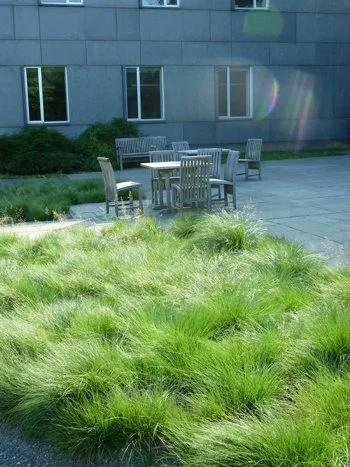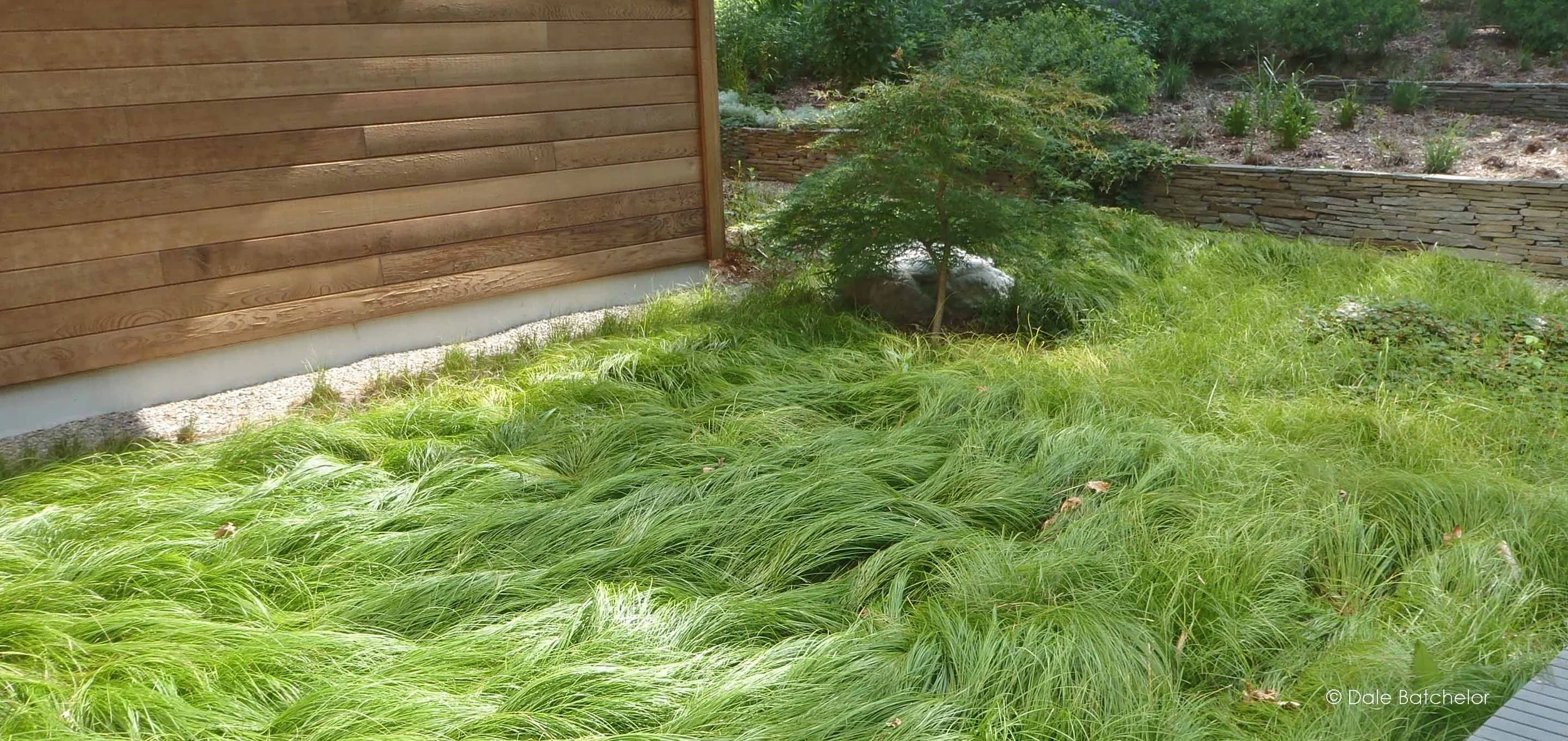No Mow May: Rethink the Lawn with Native Ground Covers & Low-Maintenance Alternatives
Each spring, No Mow May encourages gardeners to press pause on their lawnmowers—and for good reason. Letting your lawn grow just a little longer provides vital early-season food for pollinators waking up from winter. But what if we looked beyond just not mowing, and started rethinking the traditional lawn altogether?
Turf grass is high maintenance, thirsty, and doesn’t offer much to wildlife. By replacing even a small portion of your lawn with low-growing ground covers, you can reduce maintenance while creating space for pollinators, soil health, and seasonal beauty. Whether you're working with dry, sandy soil or shady corners, here are some stunning native (and a few well-behaved non-native) alternatives to explore:
🌿 Native Lawn Replacements
1. Prairie Dropseed (Sporobolus heterolepis)
A graceful, fine-textured native grass that forms tidy clumps, likes full sun and tolerates dry, sandy soils. It doesn’t spread aggressively, making it ideal for massing or blending with other ground covers.
✨ Bonus: Its fragrant, airy seedheads sway beautifully in the breeze and support birds and insects.
2. Pennsylvania Sedge (Carex pensylvanica)
This low-growing sedge is a fantastic turf alternative for part-shade to full-shade areas. It forms soft, flowing mats that resemble a natural woodland lawn.
🌤️ Ideal for: Shady spots where traditional grass struggles.
💧 Needs: Dry to moderately moist soil.
3. Creeping Phlox (Phlox subulata)
While technically a wildflower, creeping phlox acts like a ground cover—hugging the ground and bursting with color in early spring. It thrives in sunny, well-drained sites, especially sandy or rocky soils.
🌸 Pollinator magnet and erosion controller.
🧼 Low maintenance: Once established, it needs almost no care.
🌍 A Note on Special Situations: Creeping Thyme for Dry, Sandy Soil
While native plants are always the top choice for supporting local pollinators and ecosystem health, there are certain site conditions where even the toughest natives may need a helping hand.
If you're working with very dry, sandy soil in full sun, and need a low-growing ground cover that can handle foot traffic, consider creeping thyme (Thymus serpyllum).
This Mediterranean plant isn’t native to our region, but it’s well-behaved in garden settings. Its dense, mat-forming growth habit makes it a practical alternative where grass fails and native ground covers struggle to compete.
🌞 Thrives in hot, dry spots
🦋 Pollinator-friendly with summer bloom
🦶 Can be walked on—great between pavers or for small lawn replacements
💧 Low water needs once established
Use it intentionally, in small, defined areas where ecological restoration isn’t the goal but durability and low-maintenance beauty are.
🌱 Tips for Replacing Your Lawn
Start Small: Convert a section of lawn along your front walk, beneath a tree, or in a dry sunny patch where grass struggles.
Smother to Succeed: Sheet mulching or solarizing can help kill existing turf before planting your new ground cover.
Mix & Match: Combine several ground covers to increase seasonal interest and ecological value.
No Chemicals Needed: These lawn alternatives thrive without fertilizers, herbicides, or frequent mowing.
This No Mow May, let your lawn rest—but also imagine what it could become. Whether you opt for native sedges, flowering thyme, or prairie grasses, each square foot you replace helps build a more resilient and biodiverse landscape.
✨ Choose low-mow. Choose native. Choose extraordinary. ✨






